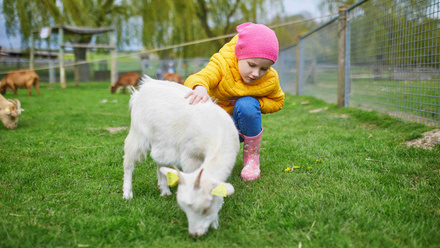How to put research into reality and implement evidence-based practice
When you think of research, what springs to mind? Colourful labs with all sorts of experiments whirring and hefty reports stacked with charts and graphs; white lab coats and dusty observation books in overflowing libraries. But research is so much more…
Research is in our everyday, referring to assessments we conduct as well as published articles, national studies and wide-scale projects. Research can also take place right in our community. It’s about observing individual interactions, noting patterns and questioning why? Whether that’s a project exploring the influence of footsteps on medieval literature, the intricate understanding of cold fusion and its possibilities for energy production, or the socio-emotional impact of storytelling opportunities for toddlers, research constantly adds new splashes of colour to our understanding of the world around us.
Within early education and care, research shapes our every decision, from the policies that guide our daily actions through to the individual choices we make based on our training and professional knowledge. Research is embedded in our working culture and how we come to understand ‘best practice’ in the playroom.
What is research within early education and care?
Research questions in early education and care, like in any other field, are often multidisciplinary, meaning they ask questions spanning across different sectors and drawing upon many pools of knowledge. For example, research into child’s oral health might encroach into discussions of broader infant health. Findings might influence not only decisions in an educational realm (such as how oral health fits into the curriculum) but also work to shape health policy too.
Children’s lives are complex things so it’s important that the research into their experiences reflects this too, thinking about a multi-dimensional approach to the questions we ask.
Understanding how research feeds into our daily practice is key to appreciating why it is valuable to get involved with it. Not only does direct participation help to create a more representative view of current issues and share a breadth of viewpoints, but also engagement on a wider level (reading new publications and sharing insights based on this) helps us to understand a broader range of ongoing conversations throughout the sector and remain informed on new ideas coming into practice.
Using research in practice
Find relevant research
There’s a sea of research out there examining intricate aspects of early education and care with interesting perspectives on topics across the sector. Whilst there are huge advantages to the wealth of information available to us at the click of a button, it can also make it challenging to find relevant, trustworthy and appropriate content.
So, to begin with, use a scholar-based search engine, such as Google Scholar, to search for key terms within your area of interest. There are different tools you can use to support and refine your search.
Let’s have a look at an example:
You want to find recent research looking into the status of professionalism within early education and care. You can start searching by using common-sense, popular words, such as “early education and care” or “early years” and “professional” or “workforce.”
If you are searching for an exact term, such as “early years”, use quotation marks during your search. This tells the search engine that you want results that include ‘early years’ as one phrase, rather than including results that include ‘early’ and ‘years’ separately:
e.g. “early years” workforce perspectives
Connect key terms to ensure the results from your search are the most relevant they can be by using “AND” in your search. This will enable the search engine to only find results that include both of your terms, rather than just one of them:
e.g. “early years” AND professionalism
Critical evaluation
The internet has major advantages for allowing open access to many resources and a treasure trove of credible findings. However, the mass of online resource can also make it difficult to decide what is most relevant and credible to our uses. The CRAAP test is just one way of evaluating information we find but provides a succinct framework for making judgements quickly so we can crack on with reading!
Take key ideas
Research outputs can be lengthy! Whilst reading an in-depth exploration into an area can be immensely beneficial to your understanding of the wider context of the issue and the parameters in which it was conducted, we often don’t have the time to dedicate to dozens of pages of report and review.
Abstracts and executive summaries are a useful tool when it comes to narrowing down our areas of interest and identifying resources that might be worth reading in full. These are paragraphs found at the start of an article and they aim to summarise the key questions and findings of the research. This can be extremely helpful for gathering a selection of sources and narrowing down the ones that are most relevant to your needs. You can use the handy notes matrix download below to help you organise these thoughts into clear and concise takeaway points before you find yourself highlighting the whole page!
Identify areas of improvement
But what do we do with all these thought-provoking findings when we’re done? Identifying the key takeaways from research can be helpful for expanding our knowledge on the current climate of the sector but should also offer opportunities for improving in our own practice.
Think about the findings of the research and what it concludes. Does it highlight a deficit in support for a group of children with particular characteristics? Does it suggest alternative strategies for working with others? What does it say about other people’s perceptions?
Reflecting on these findings by comparing the research to our own areas of improvement can be extremely valuable for finding effective, evidence-based solutions to current issues in our own work.
Research that is reliable and relevant can provide us as early education and care professionals with a whole new range of knowledge and ideas to promote quality provisions for children in our care. Whilst there is a wide range of research available to us, the breadth of it can sometimes make it difficult to know exactly where to go. Ensuring research projects and their findings are peer-reviewed, timely and relevant to the group you are engaged with can be good starting points for getting to grips with finding quality reviews for your own practice.
Follow-up activity
Identify an area of interest to you within your current practice. This might relate to an area of leadership, such as conflict resolution, or an area of early learning you are looking to expand your knowledge on. There might be a current issue in your local area that you’d like to address in your setting, such as road safety or sustainability.




